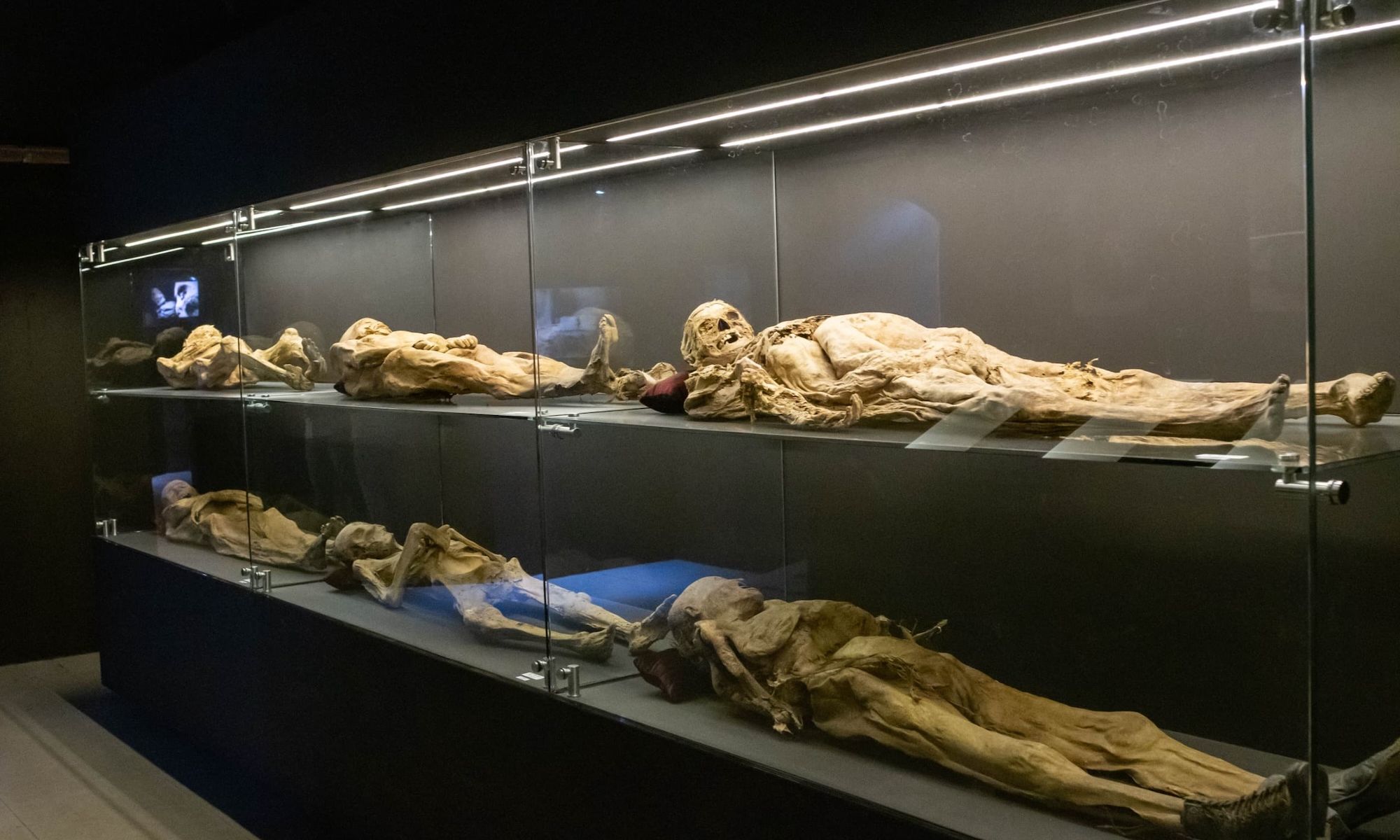The Museo de las Momias in Guanajuato, Mexico Photo: Courtesy the Government of the City of Guanajuato
Mexico’s National Institute of Anthropology and History (INAH) has accused Guanajuato’s Museo de las Momias of not following conservation protocol in a recent reconfiguration of its displays, resulting in damage to at least one of its mummies.
The museum—located in a 16th-century town that is a Unesco World Heritage site around 400km northwest of Mexico City—is famous for its collection of 117 naturally mummified bodies, half of which are on display. The mummies were exhumed from the adjacent mid-19th century Santa Paula Cemetery starting in 1870 after family members of the deceased stopped paying burial fees; the bodies had dehydrated as a result of the region’s dry, hot climate.
With the mummies’ growing popularity among visitors who frequented the cemetery, authorities decided to open a museum in 1969. Controversies at the museum are nothing new, ranging from how the corpses are handled and toured to halted plans for a new venue and the museum’s perceived commercial exploitation of death.
Recently, a rearranging of the museum’s interior space sparked the ire of INAH, which questioned the conservation protocols followed by the museum’s staff and condemned local authorities for their unwillingness to share the project’s plans beforehand. After INAH’s experts inspected the site, they confirmed that there was new damage to at least one of the mummies, known as “The Stabbed One”, whose right arm had reportedly come off. “While the mummy was already damaged, its injuries are now more severe,” INAH said in a statement.
"The Stabbed One" allegedly had an arm fall off while being moved to its current horizontal position at the Museo de las Momias in Guanajuato, Mexico Photo: Courtesy the Government of the City of Guanajuato
City authorities, who have jurisdiction over the museum and its collection, refute the claim that any harm resulted from the museum’s four-month-long redesign, which involved changing the mummies from a vertical to a horizontal position and adding warm light to the displays.
“The renovations brought no new damage to the mummies,” Jesús Antonio Borja Pérez, Guanajuato’s director of culture and education, tells The Art Newspaper. “For years the mummies deteriorated due to their exhibition and visitors’ affinity for touching them or taking souvenirs, such as bits of clothing. It was only in the early 2000s when they were protected by glass. In this renovation, we followed previous recommendations of INAH’s experts to place the bodies horizontally, and they were handled by experienced museum staff.”
Over the years, INAH and local authorities have signed collaborative agreements to preserve and study the mummies. In 2021, the federal government launched a large-scale research project aiming to uncover the identities of the mummies through forensic analysis.
“While the archival work has concluded, intent on revealing the individual stories of each corpse instead of knowing them by their nicknames, the forensic study is planned for later this year,” says Ilán Leboreiro, a biological anthropologist and part of INAH’s research commission of Guanajuato’s mummies. “General recommendations, such as horizontal placement, have been shared informally, but each body requires particular conditions to ensure its preservation. The pending forensic study will establish the guidelines, which are up to the museum to apply.”
The mummies at the Museo de las Momias in Guanajuato, Mexico, used to be displayed vertically Photo: Courtesy the Government of the City of Guanajuato
At the heart of this controversy lies a concern for the dignified preservation of the naturally dehydrated bodies, whose display initially resulted from visitors’ curiosity—or morbid interest—but over time have become part of the identity of the city and its legends. There is even a regional mummy-shaped brown-sugar candy, charamusca. However, the ongoing debate also reveals a political rift between the federal entity INAH and local authorities, each run by opposing political factions.
Economic implications may also be at play. While Guanajuato’s is not the only collection of naturally mummified bodies in the country, it is a very popular tourist destination. Just last year, the museum reported 500,000 visitors, bringing in more than $2.4m. “The museum represents the city’s second most important source of income after property taxes,” Borja says.
All of these issues are only accentuated by Mexico's upcoming general election on 2 June.
But even with this heated controversy, INAH and local authorities are willing to continue collaborating to ensure the preservation of the mummies, some of which are kept off site. “We are open to starting the next phase of the forensic study of INAH’s ongoing research project,” Borja says.
For its part, INAH says: “There is goodwill in working jointly to ensure the caring of one of the most important heritage symbols of the people of Guanajuato.”

